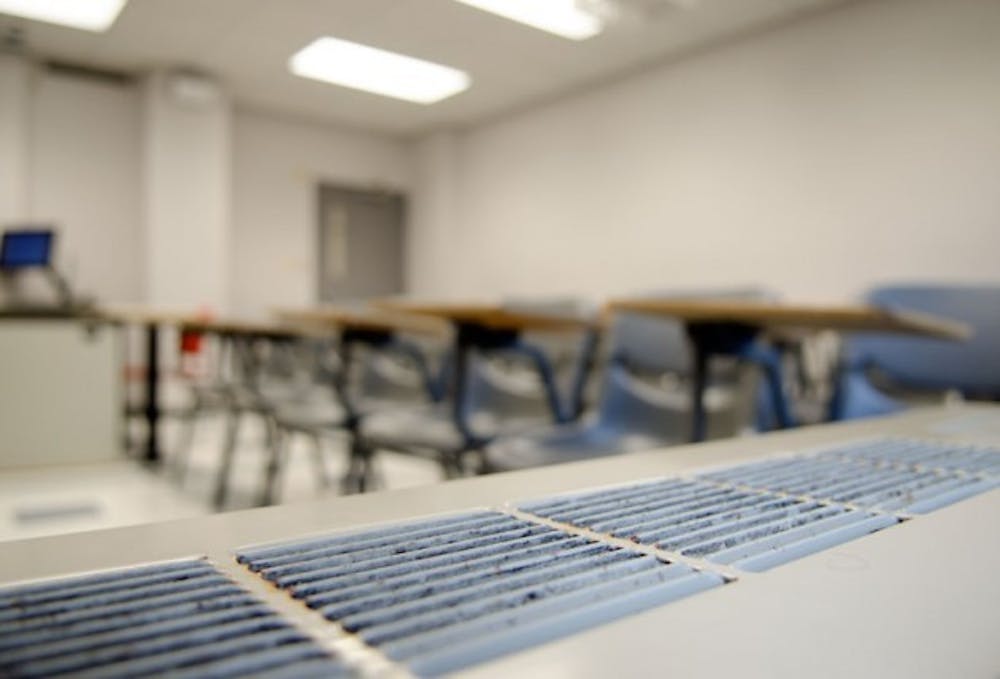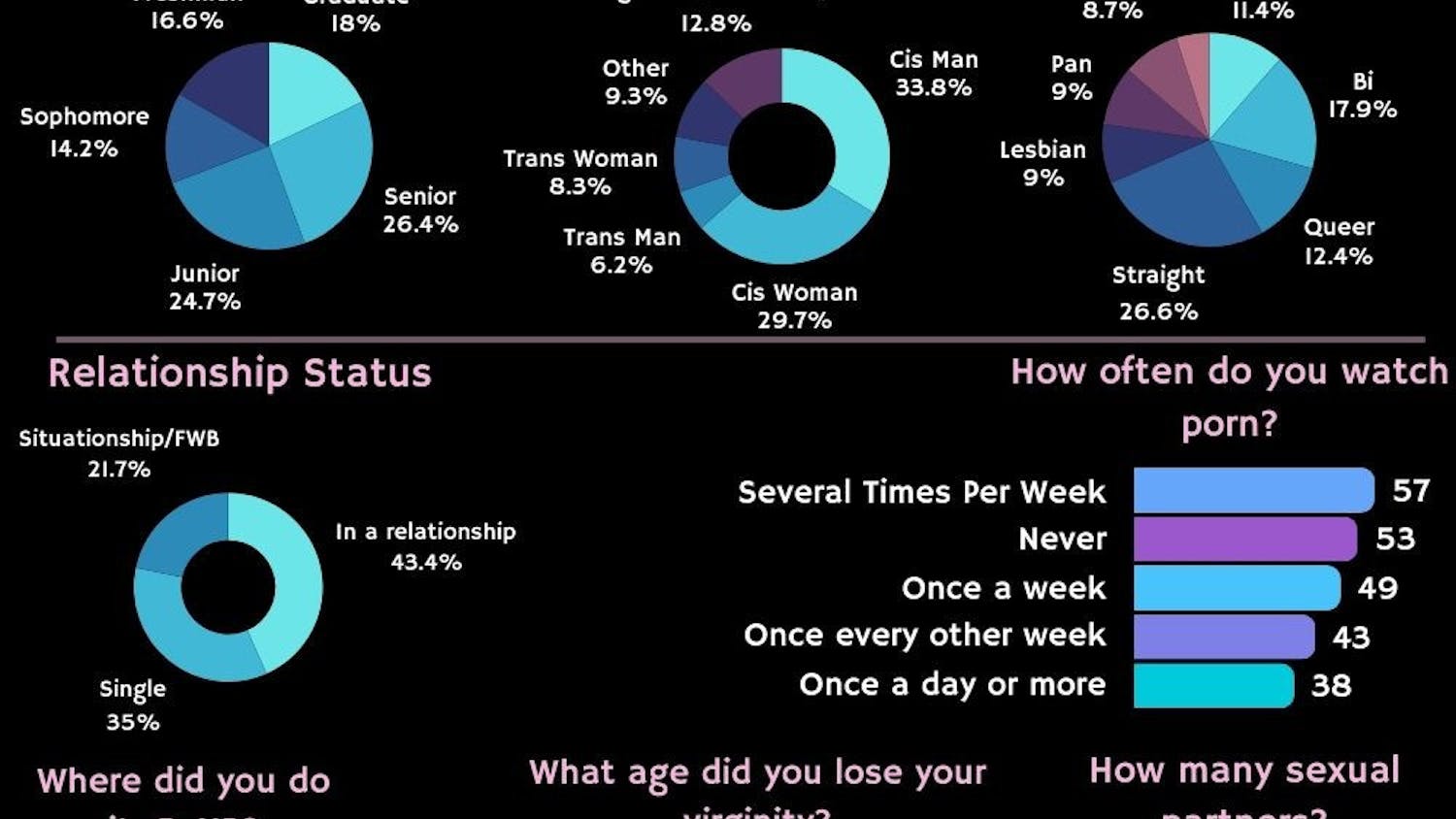UB students hoping to escape the recent string of snowstorms in exchange for an oasis of warmth in their classrooms may be out of luck.
In the summer, students experience the opposite problem – looking for a cool temperature in the dead of summer can be hard to come by in classrooms.
Classrooms and offices at UB are supposed to be heated once the temperature drops to 68 degrees Fahrenheit, according to the university’s Customer Service and Maintenance website. In warmer months, air-conditioning is supposed to kick on when the temperature in the room is more than 76 degrees. Some students, however, find their classrooms too chilly or too warm at the wrong time of the year. Students said they have difficulty focusing in class when they are concerned about the temperature of the room.
“The chills I get from just plain nervousness when taking exams is enough to deal with,” said Jermel Griffin, a junior biological and chemical engineering major. “Imagine having to deal with that and adding a blasting air conditioner to the mix.”
Offices are heated from 8 a.m. to 5 p.m. while classrooms are heated from 8 a.m. to 10 p.m. On weekends and holidays, the temperature of both classrooms and offices is lowered to 55 degrees before heating occurs. With the exception of “severe cold snaps,” the heat does not drop to such a low temperature, according to the university’s site.
“NSC 225 is a tundra,” Griffin said. “It’s like walking out of one snowstorm and into another.”
Alumni 90, Alumni 97, Norton 112, Clemens 17 and MFC 120 are also notoriously cold classrooms, according to several students.
“The fan units by the windows in Clemens hall are not the most efficient and while most of the classrooms have centralized air conditioners, for Clemens classrooms this is not the case,” said Lee Argen the managing supervisor of customer service and maintenance.
Argen said that the cold temperature in these rooms are due to the poor design in the fan units which can be problematic. He also said that the university has certain temperature regulations they must follow. Legally, the temperature in the classrooms must be kept at approximately 68 degrees although many students and faculty request for them to raise it.
Griffin said that not only the cold air, but also the loud, bothersome sound that emanates from the air conditioner is a distraction.
Central air conditioning can also be dangerous to student health. Air conditioning can “create condensation on the cooling coils and in drain pans that can grow microorganisms and mold,” according to the International Journal of Epidemiology. This affects people who suffer from respiratory illnesses such as asthma and bronchitis. The Center for Disease Control and Prevention (CDC) stated that this could cause shortness of breath, lung infections, wheezing and several other reactions.
"I think that [the cold] distracts you because you’ll constantly be thinking about how cold you are instead of doing your work,” said Iris Lopez, a freshman biological sciences major.
Freezing classrooms could be dangerous for students who suffer from conditions in which they cannot tolerate excessively cold or warm environments. CDC lists heat cramps and hypothermia to be amongst these conditions.
Richard Almon, a professor of biological sciences and adjunct professor of pharmaceutics, teaches class in NSC and Knox Hall. He said a cold draft of air flows from Hotchsetter to NSC when maintenance personnel open the outside door to the loading dock.
Many students seek the warmth of the tunnels in the winter, but even they aren’t heated.
Students said the tunnels on North Campus sometimes aren’t much warmer than the air outside. The shortest tunnel on North Campus – which connects Clemens Hall to Baird Hall – is one of the only heated tunnels on campus.
During the normal working day, Customer Service and Maintenance has a cooling policy, which states that all air-conditioned offices, classrooms, libraries and labs are cooled to 76 degrees. This temperature is allowed to rise during the evening and weekends and holidays although the site does not specify how high.
Ashley Cercone, a senior anthropology major, said there was no air conditioning in Fillmore 322 when she took a summer class there.
“The heat made me feel super tired and drowsy,” Cercone said.
Aside from Diefendorf 104, classrooms on South Campus are well heated, according to Griffin.
John Villalta, a sophomore exercise science major, is content with the temperature of his classrooms.
Madison Trammell, a senior speech and hearing science major, grew up in Buffalo and still doesn’t like the cold.
“Being from Buffalo, you would think that I have a higher threshold for cold, but really cold is just something you never get used to,” she said.
email: features@ubspectrum.com





